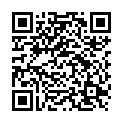|
|
|
| Module code: KI460 |
|
|
2V (2 hours per week) |
|
2 |
| Semester: 4 |
| Mandatory course: yes |
Language of instruction:
German |
Assessment:
Klausur 120 min.
[updated 20.03.2007]
|
KI460 (P222-0021) Computer Science and Communication Systems, Bachelor, ASPO 01.10.2014
, semester 4, mandatory course
|
30 class hours (= 22.5 clock hours) over a 15-week period.
The total student study time is 60 hours (equivalent to 2 ECTS credits).
There are therefore 37.5 hours available for class preparation and follow-up work and exam preparation.
|
Recommended prerequisites (modules):
KI370 Digital Technology
[updated 17.06.2015]
|
Recommended as prerequisite for:
KI669 Real-Time Operating Systems
[updated 01.02.2007]
|
Module coordinator:
Prof. Dr.-Ing. Jürgen Schäfer |
Lecturer:
Prof. Dr.-Ing. Jürgen Schäfer
[updated 01.04.2003]
|
Learning outcomes:
Students will acquire a detailed understanding of the use of microprocessors in telecommunications. An important element in this course is the relationship between hardware design and its subsequent implementation. To illustrate the principles involved, students will study the design of an access unit of the type typically found in embedded systems. A particular aim of this course is to teach students about the different (telecommunication and microprocessor) clock systems.
[updated 13.03.2007]
|
Module content:
1. General structure of a telecommunications system
2. Application of microprocessors as illustrated by a controller unit in an optical network
3. Structure and functionality of a microprocessor
4. Structure of PCM-30 systems
5. Use of HDLC controllers
6. Integration of memory time switch devices (interface components)
7. ISDN chipset (Basic Access) / POTS (analogue telephone)
8. Interrelationship between HW and SW architectures
9. Telecommunications software in detail
10. Bus applications in telecommunications systems
12. Dual-clock systems (microprocessor, PCM)
[updated 13.03.2007]
|
Recommended or required reading:
SCHIEF R., Einführung in die Mikroprozessoren und Mikrocomputer, Attempto, 1997
SCHMITT G., Mikrocomputertechnik mit 8086-Prozessoren, Oldenburg
[updated 13.03.2007]
|
Module offered in:
SS 2018,
SS 2017,
SS 2016,
SS 2015,
SS 2014,
...
|


